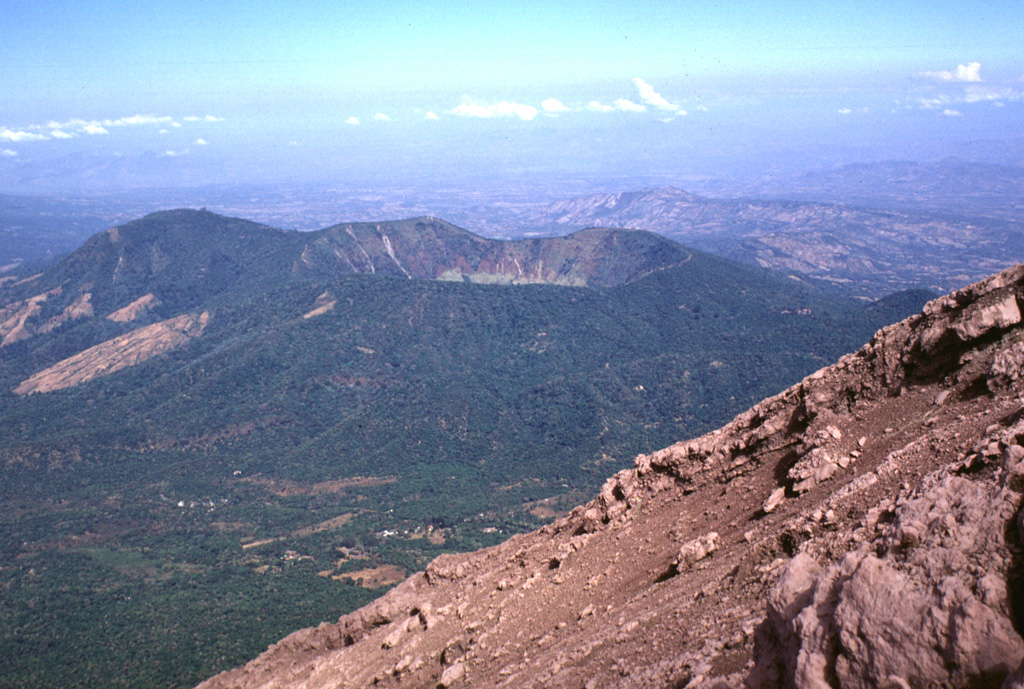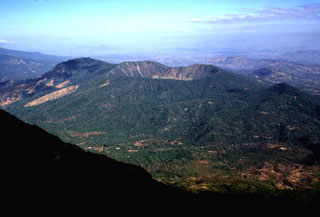Image GVP-07638

Chinameca volcano, also known as El Pacayal, is seen here to the NW from the barren upper flanks of San Miguel volcano. Coffee plantations mantle the slopes of the 1300-m-high stratovolcano, which is truncated by a 2-km-wide caldera. The high point of the caldera, Cerro el Pacayal, lies on the western rim (left-center) and rises about 450 m above the caldera floor. The rounded peak of Cerro el Limbo at the left rises to above 1380 m, exceeding the height of the caldera rim.
Photo by Lee Siebert, 1999 (Smithsonian Institution).
![]() This image is made available under the Public Domain Dedication CC0 license, but proper attribution is appreciated.
This image is made available under the Public Domain Dedication CC0 license, but proper attribution is appreciated.

Chinameca
